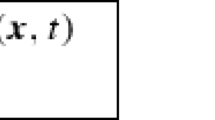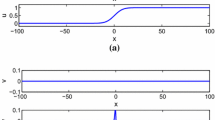Abstract
Although Gaussian scale-space is the canonical way to define a linear scale evolution, people may regard some of its properties as less desirable under certain conditions:
-
(a)
Semantically useful information is eliminated in the same way as noise. Since the Gaussian scale-space is completely uncommitted, one cannot incorporate image-driven information in order to bias the scale-space evolution towards a desired task, for instance edge detection.
-
(b)
Linear diffusion filtering dislocates edges when moving from finer to coarser scales, see e.g. Witkin (Witkin, 1983). So structures which are identified at a coarse scale have to be traced back to the original image (Witkin, 1983; Bergholm, 1987). In practice, this correspondence problem can be difficult to handle and may give rise to instabilities.
Access this chapter
Tax calculation will be finalised at checkout
Purchases are for personal use only
Preview
Unable to display preview. Download preview PDF.
Similar content being viewed by others
Author information
Authors and Affiliations
Editor information
Editors and Affiliations
Rights and permissions
Copyright information
© 1997 Springer Science+Business Media Dordrecht
About this chapter
Cite this chapter
Weickert, J. (1997). Nonlinear Diffusion Scale-Spaces. In: Sporring, J., Nielsen, M., Florack, L., Johansen, P. (eds) Gaussian Scale-Space Theory. Computational Imaging and Vision, vol 8. Springer, Dordrecht. https://doi.org/10.1007/978-94-015-8802-7_16
Download citation
DOI: https://doi.org/10.1007/978-94-015-8802-7_16
Publisher Name: Springer, Dordrecht
Print ISBN: 978-90-481-4852-3
Online ISBN: 978-94-015-8802-7
eBook Packages: Springer Book Archive




